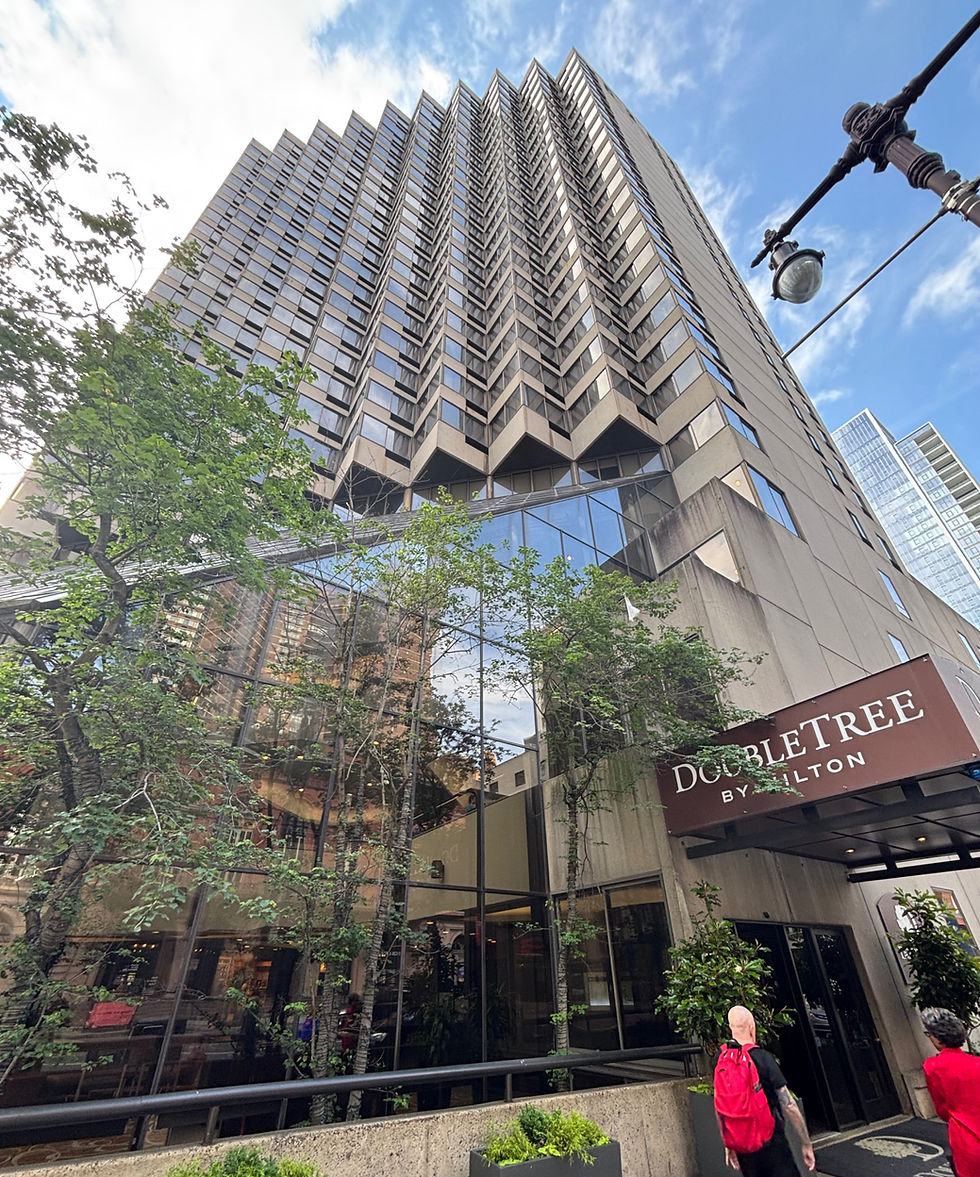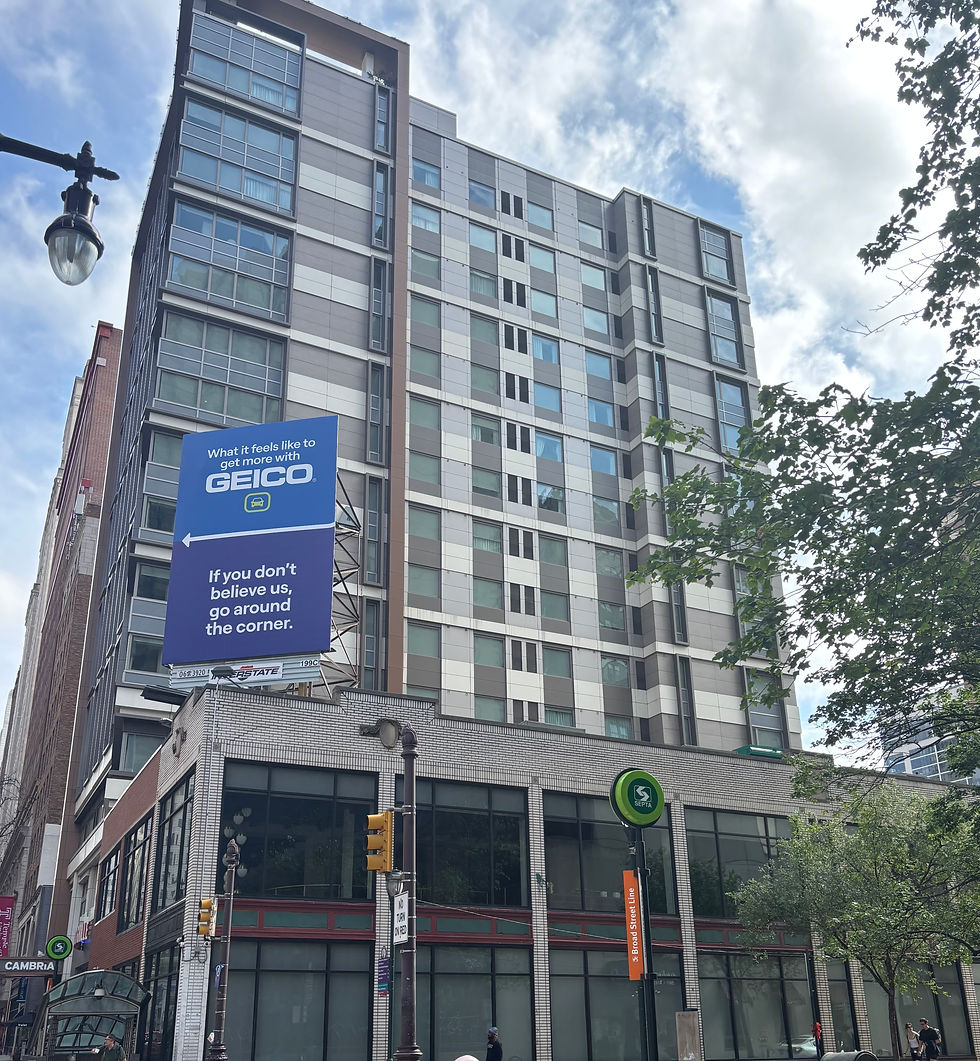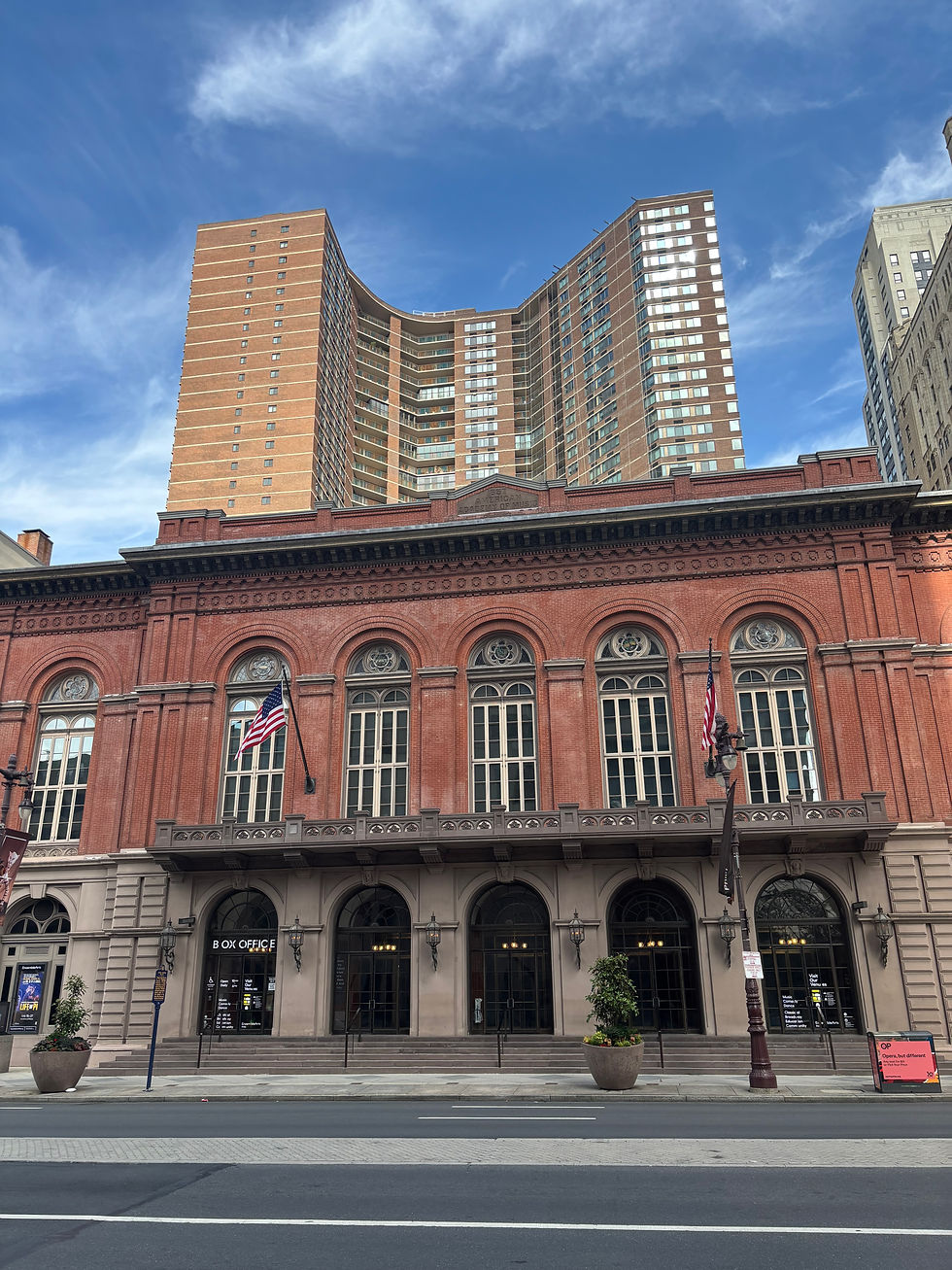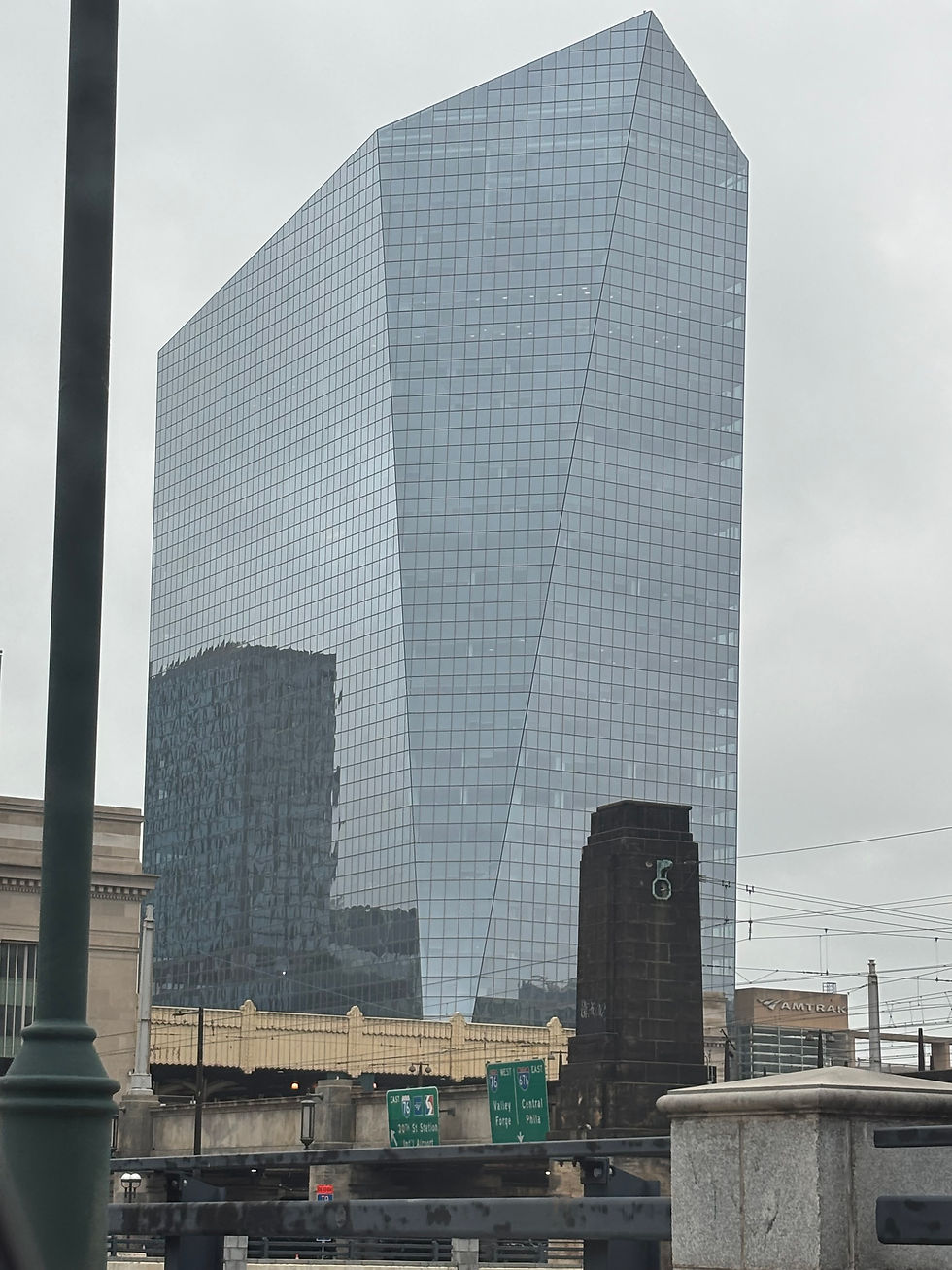Philly, a refreshing taste of the big city
- Charles Reams

- Jun 13
- 3 min read
As seniors visiting Philadelphia, we chose not to take the sightseeing and bus tours of the most historic and famous sights, but to examine what we see immediately around us.

The sprawling Philadelphia International Airport (PHL) covers 2,302 acres. It has four runways and a total of 126 boarding gates across six terminals. The airport also boasts 3,254,354 square feet of terminal space and 449,761 square feet of cargo space.
Michael, a nephew, picked us up at the airport and took us to our hotel.

Three nicely dressed ladies manned a portable Bible literature cart, warmly welcomed us to the center city.

We started our tour with the Doubletree by Hilton, corner of S. Board and Locust, our lodging place. The hotel has 481 rooms, including 48 kitchenettes. The first five stories are occupied with meeting rooms, gym, pool and sauna, restaurants, and shops.
Four A-train-like elevators promptly whisk guests silently at breakneck speeds and stops on a dime with no whiplash to riders.
At rush hour, three or four front-desk clerks checked us in.

Philadelphia was founded in 1682 by William Penn as the capital of the Province of Pennsylvania. Therefore, Philadelphia is about 442 years old.
It is impossible to imagine how much money has converged on this city of endless skyscrapers of stone, brick, and marble.

The Philadelphia City Hall was designed by architect John McArthur Jr. and built between 1871 and 1901. Thomas Ustick Walter also contributed to the design. The building is located in the heart of Philadelphia's Center City, the business, financial, and entertainment hub of the city.
Philadelphia's strategic location along the Delaware and Schuylkill Rivers, near the Atlantic Ocean via the Delaware Bay, has offered numerous advantages throughout its history and continues to do so today.
Urban planners and engineers laid out the city’s streets. These professionals determine factors such as street layouts, widths, and the allocation of space for vehicles, pedestrians, and public use. Advantages of the Grid Plan.
Planners were focused on easy navigation, predictable and adaptable traffic movement, walkability, and economic advantages.
Important Note: While the grid plan offers advantages, drawbacks include high intersection density. Rush hour is horrendous.

Pedestrians invariably stare at the amazing variety of architectural styles and the staggering size of the skyscrapers.
College graduates and all with something to celebrate make their way to the center city islands or elevated boulevards, donning tasseled caps and gowns or other garb and strut their stuff in a fleeting moment of glory.
Skyscrapers rival one another for your attention, each one vaulting its unique contribution to the growing architecture lore.
How do you have a favorite with such endless variety, such as a mix of style, taste, color, and texture? For example, there are glass buildings and structures of brick, rock, and stone. There are historic and modern with a mix of ultra modern thrown in to keep you guessing.
The city crawls with pedestrians of all flavors, sizes, and persuasions, some in business attire, others in casual attire, and the religious garb common of Muslin, Orthodox Jews, eastern monks, and American Indian outfits; and there is everywhere to be seen the grunge look, the exotic, and the flat-out weird.
The big city homeless population exudes a certain amount of suave sophistication; after all, they reside in Philadelphia. Let no one confuse this penniless soul with the country bumpkin.
Whatever your expectations for the social intercourse of Philly, you have to be surprised and pleased with the charming, outgoing, and engaging nature of many. After all, it is still the city of brotherly love.


